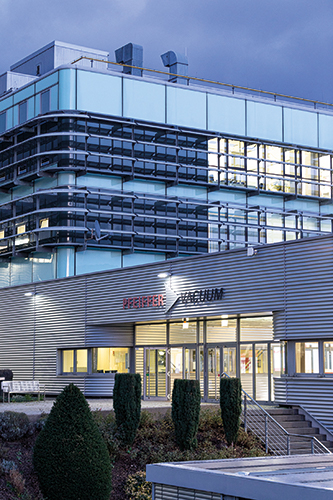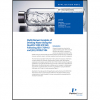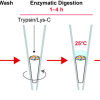
Pfeiffer Vacuum is celebrating its 130 years in business. The company introduced the turbomolecular pump in 1958. Arthur Pfeiffer founded the company in Wetzlar, Germany, in 1890, and he initially devoted his attention to the production of remote ignition systems for gas lamps. Once electric light bulbs had become established, the company founder quickly turned his attention to the new lighting technology, which led him to look at the vacuum technology used in its production. Arthur Pfeiffer quickly recognised the significance that vacuum technology could have in practically all areas of industry and research—and he subsequently concentrated entirely on this field.
Dr Eric Taberlet, Chief Executive Officer of Pfeiffer Vacuum Technology AG commented: “With our durable products and customised vacuum solutions, we are able to satisfy practically every customer requirement and to establish relationships that will endure for years to come. At Pfeiffer Vacuum, ‘sustainability’ is not just an empty word. We are aware of our responsibility. And this is why, at all our locations around the world, we establish the necessary conditions to make sure that our staff enjoy working for Pfeiffer Vacuum. We are socially committed, because we want to give something back, and we produce our products in the most energy-efficient and environmentally-compatible manner possible. We have been living and breathing sustainability—by tradition—for 130 years.”




![Targeted proton transfer charge reduction (tPTCR) nano-DESI mass spectrometry imaging of liver tissue from orally dosed rat (Animal 3). a) optical image of a blood vessel within liver tissue. b) Composite ion image of charge-reduced haeme-bound α-globin (7+ and 6+ charge states; m/z 2259.9 and m/z 2636.3 respectively, red) and the charged-reduced [FABP+bezafibrate] complex (7+ and 6+ charge states; m/z 2097.5 and m/z 2446.9 respectively, blue). c) Ion image composed from charge-reduced haeme-bound α-globin (7+ and 6+ charge states) showing abundance in blood vessels. d) Ion image composed from charge-reduced [FABP+bezafibrate] complex (7+ and 6+ charge states) showing abundance in bulk tissue and absence in the blood vessel. Reproduced from https://doi.org/10.1002/ange.202202075 under a CC BY licence. Light and mass spectromert imaging of tissue samples](/sites/default/files/styles/thumbnail/public/news/MSI%20drug-protein%20complex-w.jpg?itok=CBNIjyYl)




